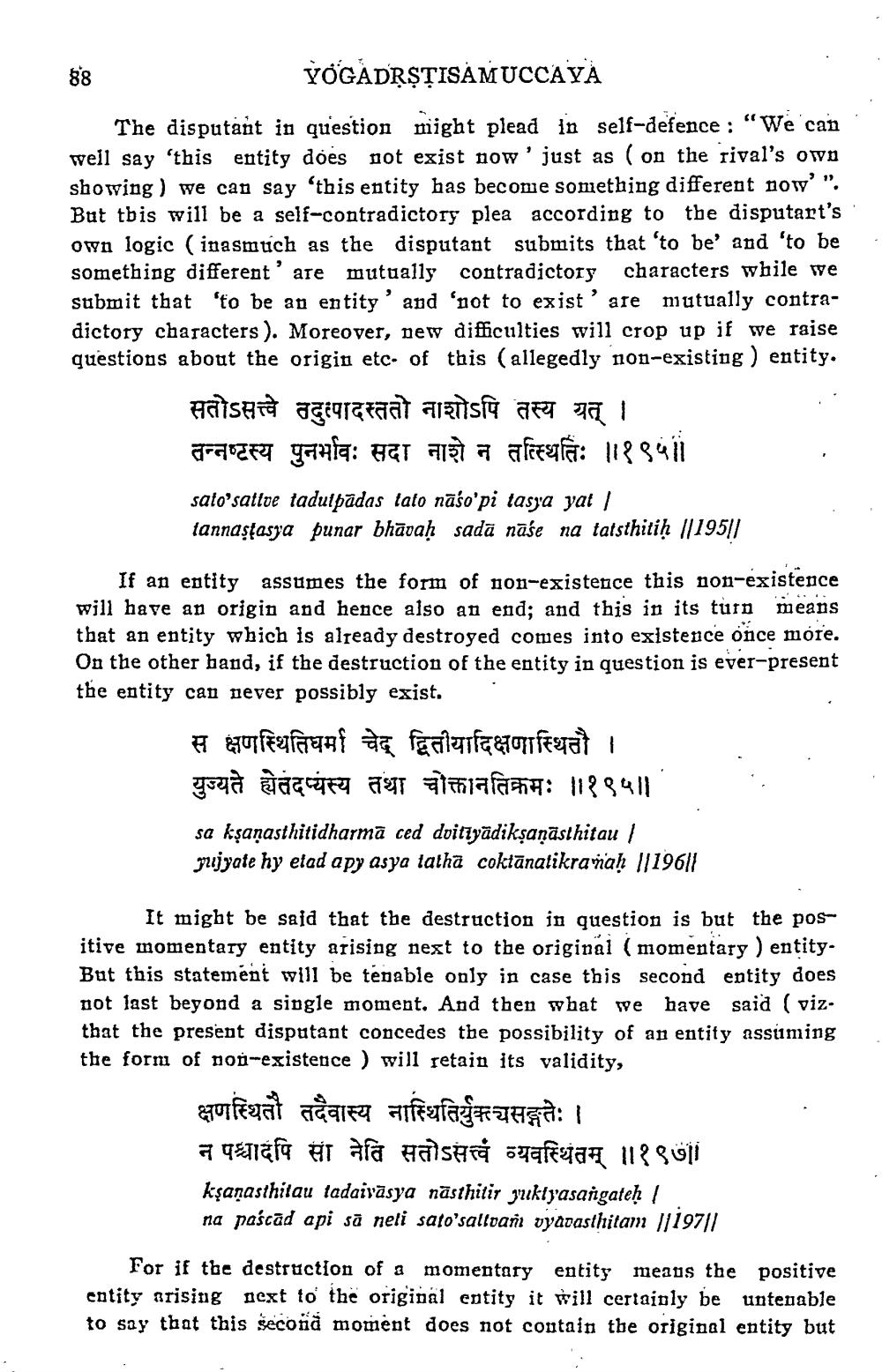________________
888
YOGADṚSTISAMUCCAYA
The disputant in question might plead in self-defence: "We can well say 'this entity does not exist now' just as (on the rival's own showing) we can say 'this entity has become something different now' ". But this will be a self-contradictory plea according to the disputart's own logic (inasmuch as the disputant submits that 'to be' and 'to be something different are mutually contradictory characters while we submit that 'to be an entity' and 'not to exist are mutually contradictory characters). Moreover, new difficulties will crop up if we raise questions about the origin etc of this (allegedly non-existing) entity.
सतोऽसत्त्वे तदुत्पादस्ततो नाशोऽपि तस्य यत् ।
azaozza yaula: Bar aðì a afzuf: 1189411
sato'sative tadulpadas tato naso'pi tasya yat | tannastasya punar bhavaḥ sada nase na tatsthitiḥ ||195||
If an entity assumes the form of non-existence this non-existence will have an origin and hence also an end; and this in its turn means that an entity which is already destroyed comes into existence once more. On the other hand, if the destruction of the entity in question is ever-present the entity can never possibly exist.
स क्षणस्थितिधर्माचेद् द्वितीयादिक्षणास्थितौ ।
युज्यते ह्येतदप्यस्य तथा चोक्तानतिक्रमः ॥ १९५॥
sa kṣaṇasthitidharmā ced dvitiyādikṣaṇāsthitau | pujyate hy etad apy asya tatha coktānatikrañaḥ ||196||
It might be said that the destruction in question is but the positive momentary entity arising next to the original (momentary) entityBut this statement will be tenable only in case this second entity does not last beyond a single moment. And then what we have said (viz. that the present disputant concedes the possibility of an entity assuming the form of non-existence) will retain its validity,
क्षणस्थितौ तदैवास्य नास्थितिर्युक्यसङ्गतेः ।
न पश्चादपि सा नेति सतोऽसत्त्वं व्यवस्थितम् ॥१९७॥
kṣaṇasthitau tadaivasya nästhitir yuktyasangateḥ na paścād api sā neli sato’sallvaṁ vyavasthitam ||197||
For if the destruction of a momentary entity means the positive entity arising next to the original entity it will certainly be untenable to say that this second moment does not contain the original entity but




